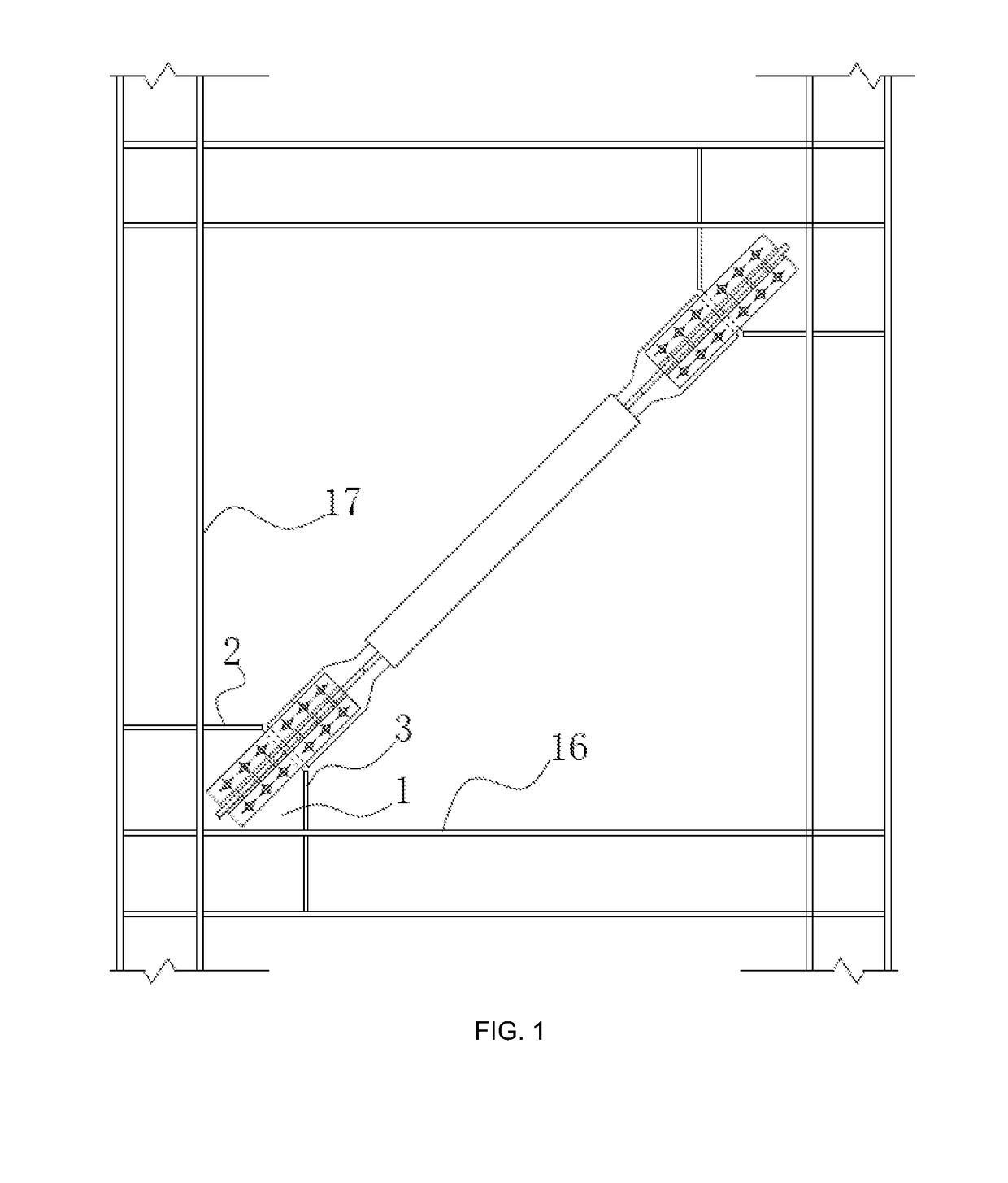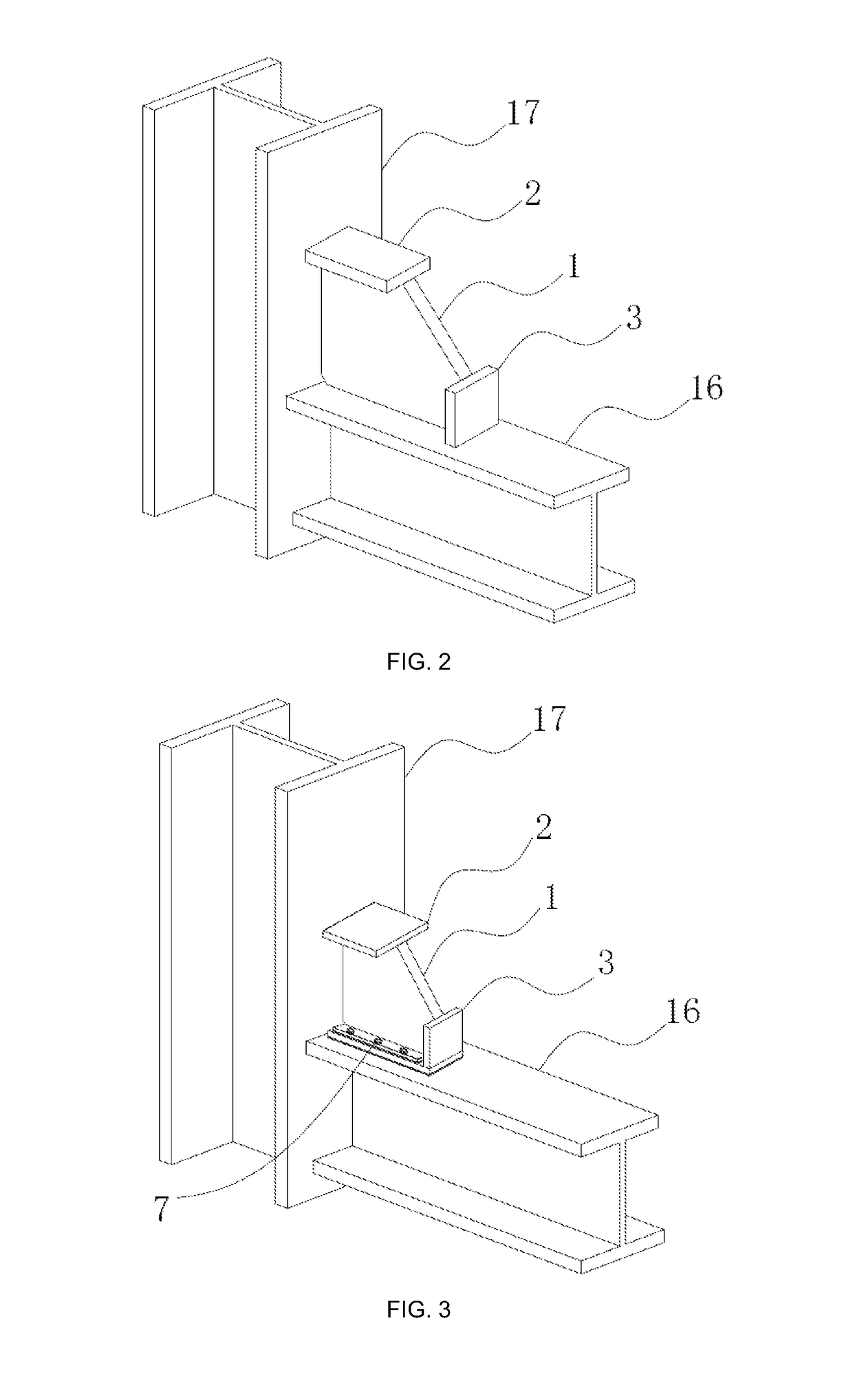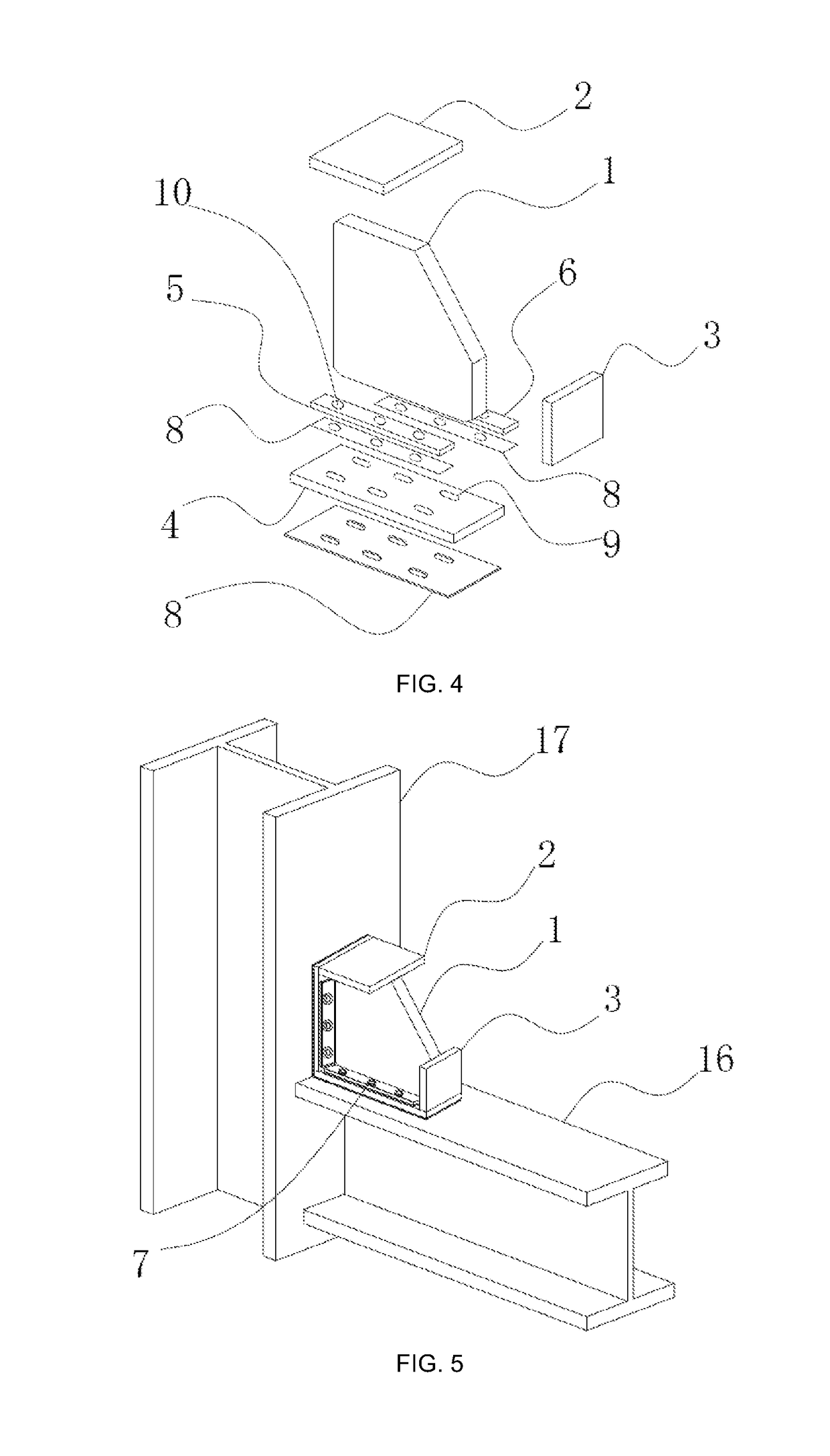Connecting gusset plate with sliding end plate for buckling-restrained brace
a technology of buckling-restrained braces and sliding end plates, which is applied in the direction of building types, construction, building repairs, etc., can solve the problems of buckling-restrained braces that cannot be welded, the failure mode of beam-columns to be transferred, and the effect of reducing the effective length of beam-columns
- Summary
- Abstract
- Description
- Claims
- Application Information
AI Technical Summary
Benefits of technology
Problems solved by technology
Method used
Image
Examples
first embodiment
[0034]The present embodiment provides a gusset plate connection with sliding end plates for a buckling-restrained brace, where FIG. 1 is a structural diagram showing the overall connection between a buckling-restrained brace and beam column, FIG. 3 is a structurally schematic diagram of a gusset plate connection with sliding end plates for a buckling-restrained brace provided in the first embodiment of the present disclosure, and FIG. 4 is an exploded view of the gusset plate connection with sliding end plates for a buckling-restrained brace provided in the first embodiment of the present disclosure. As shown in FIGS. 1, 3 and 4, the main structure of the gusset plate connection with sliding end plate for a buckling-restrained brace comprises a central plate 1, a first rib plate 2, a second rib plate 3, a horizontal end plate 4, a first horizontal tie plate 5, a second horizontal tie plate 6, bolts 7, and unbonding layers 8. Specifically, the horizontal end plate 4 is perpendicular ...
second embodiment
[0039]In the second embodiment, the gusset plate connection with sliding end plates is further provided with a vertical end plate 11, a first vertical tie plate 12, and a second vertical tie plate 13. FIG. 5 is a schematic diagram of the structure of a gusset plate connection with sliding end plates for a buckling-restrained brace provided in the second embodiment of the present disclosure; and FIG. 6 is an exploded view of the gusset plate connection with sliding end plates for a buckling-restrained brace provided in the second embodiment of the present disclosure. Specifically, as shown in FIGS. 5 and 6, the vertical end plate 11 is perpendicular to both of the central plate 1 and the horizontal end plate 4, and is fixedly disposed with respect to the first rib plate 2 on a left end surface of the central plate 1. The first vertical tie plate 12 and the second vertical tie plate 13 are both disposed on a right surface of the vertical end plate 11, and are respectively located at e...
PUM
 Login to View More
Login to View More Abstract
Description
Claims
Application Information
 Login to View More
Login to View More - R&D
- Intellectual Property
- Life Sciences
- Materials
- Tech Scout
- Unparalleled Data Quality
- Higher Quality Content
- 60% Fewer Hallucinations
Browse by: Latest US Patents, China's latest patents, Technical Efficacy Thesaurus, Application Domain, Technology Topic, Popular Technical Reports.
© 2025 PatSnap. All rights reserved.Legal|Privacy policy|Modern Slavery Act Transparency Statement|Sitemap|About US| Contact US: help@patsnap.com



